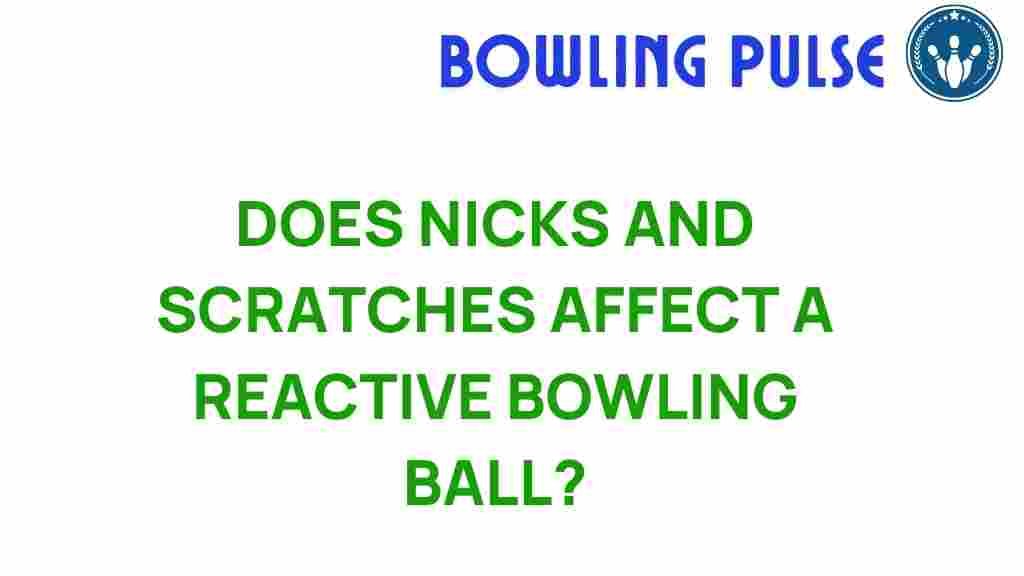Do Nicks and Scratches Diminish a Bowling Ball’s Performance?
When it comes to bowling, the performance of your equipment plays a crucial role in your overall game. One of the most significant factors affecting a bowler’s performance is the condition of their bowling ball. Nicks and scratches can occur over time due to regular use, but how do they impact the bowling ball’s performance? In this article, we’ll explore the relationship between nicks, scratches, and the performance of a bowling ball, particularly focusing on reactive resin balls, maintenance techniques, and overall ball care.
Understanding Bowling Ball Construction
To appreciate how nicks and scratches affect performance, it’s essential to understand the different types of bowling balls available. Most modern bowling balls are made from various materials, with reactive resin being one of the most popular choices among serious bowlers.
- Plastic Balls: These are often used by beginners and for straight shots. They are less affected by nicks and scratches.
- Reactive Resin Balls: These offer superior grip and are favored by experienced bowlers. Their performance can be significantly impacted by surface damage.
- Urethane Balls: A middle ground between plastic and reactive resin, urethane balls also require maintenance to ensure peak performance.
The Impact of Nicks and Scratches on Performance
Nicks and scratches on a bowling ball can diminish its performance in several ways:
- Reduced Hook Potential: Reactive resin balls are designed to grip the lane and create a hook. Nicks and scratches can disrupt this surface, leading to less predictable ball movement.
- Inconsistent Roll: A damaged surface can cause the ball to roll unevenly, making it harder to control and follow through on shots.
- Altered Trajectory: Imperfections can change the way the ball interacts with the lane and pins, resulting in missed strikes.
In summary, while nicks and scratches may seem minor, they can significantly affect the performance of a bowling ball, particularly reactive resin types that rely on a smooth surface for optimal performance.
Regular Maintenance and Ball Care
To keep your bowling ball performing at its best, regular maintenance is essential. Here are some tips for maintaining your bowling ball:
- Cleaning: After every bowling session, wipe down your ball with a microfiber cloth to remove oil and debris. Consider using a specialized bowling ball cleaner.
- Deep Cleaning: Periodically, perform a deep clean using a bowling ball cleaning solution and a ball spinner if you have one. This helps restore the surface texture.
- Surface Adjustment: If your ball has developed nicks or scratches, consider using a sanding pad to smooth out the surface. Be cautious and follow the manufacturer’s guidelines.
- Storage: Store your bowling ball in a cool, dry place, away from direct sunlight and extreme temperatures to prevent warping and further damage.
Regular maintenance not only prolongs the life of your bowling ball but also ensures that its performance remains consistent. A well-maintained bowling ball can help you achieve better scores and enjoy the game more.
Bowling Techniques to Mitigate Damage
While it’s impossible to prevent all nicks and scratches, you can adopt techniques that minimize damage to your ball:
- Avoid Hitting the Gutter: Be mindful of your shots to avoid gutter balls, which can cause significant damage to the ball.
- Practice Good Technique: Focus on your delivery and follow-through to prevent unnecessary impact with the lane or pins.
- Choose the Right Lanes: Some bowling alleys have rougher surfaces. Opt for lanes that are well-maintained, as they are less likely to cause damage to your ball.
Troubleshooting Common Ball Issues
If you notice a decline in your bowling ball’s performance, consider these troubleshooting tips:
- Check for Visible Damage: Inspect your ball for nicks and scratches. If you find any, assess their severity.
- Test the Surface: Run your fingers over the surface. If it feels rough or uneven, it may need a deep clean or resurfacing.
- Consult a Professional: If you’re unsure about how to repair your ball, consider taking it to a professional. Many bowling pro shops offer resurfacing services.
Addressing these issues promptly can help restore your bowling ball’s performance and ensure you maintain your competitive edge.
Conclusion
In conclusion, nicks and scratches can indeed diminish a bowling ball’s performance, particularly for those made of reactive resin. Understanding the impact of these imperfections on your game is crucial for any bowler looking to improve their scores and overall experience. By committing to regular maintenance and adopting efficient bowling techniques, you can prolong the life of your equipment and keep your performance at its peak.
Remember, a well-cared-for bowling ball not only enhances your game but also adds to the enjoyment of bowling as a sport. For more information on bowling ball care and maintenance, check out this comprehensive guide.
For further reading on bowling techniques, visit this resource that offers valuable tips and strategies to improve your game.
This article is in the category Equipment and created by BowlingPulse Team
